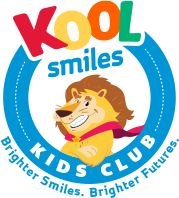
How Much Do Braces Cost?
Children can give children better oral health, great smiles, and an all-over boost in confidence. As parents, you want the best dental care for your kids. So what will braces cost with insurance and what out-of-pocket options are available for children without insurance?
There are different types of braces used these days. The cost of traditional braces can range from $3,000 to $7,000. The cost of treatment will not only depend on the materials used, but the difficulty of the case and the length of time your child will wear them as well.
Thinking about getting your kid braces? Kool Smile’s partner dentists offer no-cost consultations. We can diagnose and determine which type of braces is most suitable for your child, and additionally we can help you explore your options for payment, regardless if you have dental insurance or not.
Call us to schedule your child’s first appointment, the first step to achieving a healthy smile through affordable and quality dental care.
Braces: Types and Cost
There are different types of braces available for children and teens. We can guide you in choosing which one is the best for your child.
Traditional Metal Braces
When we say braces, most people immediately think of silver brackets. These are the traditional metal braces, and can cost between $3000 to $7000 depending on your insurance coverage. Any type of orthodontic treatment will require multiple and frequent visits to the dentist which may increase the overall cost.
Damon Braces
Damon Braces are a good alternative to traditional braces in terms of aesthetics. This system uses brackets that clamp onto the wires to hold them in place. They come in two options: metal or clear brackets. Damon braces require fewer dental appointments but are more expensive compared to traditional braces. They can cost from $5100 to $7000 depending on if you have insurance coverage or not.
Invisible Aligners
If you or your child want their braces to be almost unnoticeable, invisible aligners are a good choice. These clear aligners work to straighten teeth and improve the smile, without drawing too much attention to themselves.
These are a popular selection for teens or children who do not like the look or feel of having traditional metal brackets. Additionally, they are a faster treatment option for fixing the alignment of teeth. That said, invisible aligners come at a steeper price, ranging from $3500 to $8000 without insurance.
Ceramic Braces
Another aesthetic option for orthodontic treatment is ceramic braces. Tooth-colored ceramic brackets are used instead of metal, which look a lot like normal teeth. It’s important to note though that proper cleaning and frequent visits to your orthodontist is needed to prevent them from staining. Ceramic braces work a lot like clear aligners, in that they can shift teeth at a faster rate compared to traditional methods. Although effective, they are more expensive and can cost between $4,000 to $8,000.
Lingual Braces
Another option for those that do not like having visibly shown brackets are lingual braces. Instead of placing brackets on the front, they are placed on the backside of the teeth. This gives an illusion of normalcy, as if the patient is not wearing braces at all. Lingual braces can be difficult to clean because of their location, however, and are also more expensive; the cost can range from $8,000 to $10,000.
Payment for Kid’s Braces: With or Without Insurance
Regardless if you have insurance coverage or not, our partner dentists are available for no-cost consultations to help determine the best type of treatment and what the costs would be. If you don’t have dental insurance and our orthodontist determines that the case is medically necessary, the cost is typically tax-deductible.
If you have Medicaid coverage and the case is deemed medically necessary, the cost will be partially covered. Our partners offer orthodontic services at various locations and accept most forms of insurance like Medicaid and SCHIP.
We offer other payment options for those that are not covered by insurance as well; we have structured payment plans, and accept CareCredit, credit cards, and debit. We can also help you find ways to fit dental care into your budget.
How much do Braces cost for Adults?
If you’re an adult that has misaligned teeth, an overbite, or an underbite, you should visit an orthodontist. The cost of braces varies once you reach adulthood due to the increased treatment difficulty as a result of:
- Teeth that are in place due to completed bone growth. Immature bones in developing children and teens allow their teeth to be moved and aligned easily compared to teeth embedded in a mature adult’s bones.
- Between the ages of 20 and 30, the bones reach their peak form which makes it increasingly more difficult to facilitate the movement of teeth.
- The treatment take longer than kid’s do because adult teeth take longer to reposition.
Dental insurance typically does not cover orthodontic treatment for patients over the age of 18 unless the case is considered medically necessary. Book a consultation with your local orthodontist or dentist to find out more about the cost and details for adult braces.
What Factors Affect the Cost of Braces?
Each type of braces will come at an average cost, but some factors can increase the price of your treatment. These can be:
- Length of treatment. Each orthodontic appointment will cost a certain amount. On average, a patient wears braces from 1-3 years. If a patient requires longer treatment, it will cost more.
- Tooth extractions. For orthodontic treatment to be a success, teeth may have to be removed. This is especially the case for those with overcrowding. Remaining baby teeth, or some permanent teeth, may need to be removed to create space for proper tooth alignment.
- Surgical intervention. Wisdom teeth need to be surgically removed to avoid any possible complications during, and after, orthodontic treatment. Additionally, any teeth that are embedded inside the gums may need to be surgically attached to a bracket & chain to move them into their right place. These special procedures will add to the baseline cost of orthodontic treatment.
Are Braces Worth it?
Aside from having a beautiful smile, orthodontic treatment targets misaligned teeth which have a greater risk for developing oral health issues, such as:
- Difficulty in chewing and biting
- Dental caries due to misaligned teeth or crowding
- Fractured teeth
- Gingivitis
- Periodontal disease
Overcrowded teeth are particularly difficult to clean, regardless if you try to maintain proper oral hygiene. The improper alignment causes some areas to be susceptible to getting cavities and plaque buildup.
Pressure from overlapped or misaligned teeth may also cause enamel to break down, which results in a weaker tooth surface. Over time, this can result in serious dental concerns like inflammation of the gingiva or periodontal disease.
Braces not only create nice smiles, but it is also a treatment option for a healthy oral cavity.
Benefits of Braces and Orthodontic Treatment
Orthodontic treatment is meant to improve the oral health of both children and adults. Any patient with cases of misalignment, crowded teeth, under or overbites can benefit from having braces. The advantages of having properly aligned teeth and occlusion include:
- Better bite and improved speaking
- Ease in the maintenance of oral health due to properly aligned teeth
- Healthy teeth and gums due to reduced plaque buildup
- Improved confidence because of a beautiful smile
How to Take Care of Your Braces
The success of the orthodontic treatment will depend on the dentist as well as patient compliance. Patients need to be able to maintain proper oral hygiene, especially when brackets and wires are installed. The patient must be able to pay more attention to brushing and flossing in order to be able to clean the teeth efficiently.
We’ve listed helpful tips to keep your oral health in tip-top condition while you’re undergoing orthodontic treatment:
- Brush at least 3x a day. Be mindful when you do so, as you want to make sure that the teeth and brackets are appropriately cleaned.
- The proper way to brush is brushing from the top down at a 45-degree angle in circular motions.
- Do not brush vigorously, your brackets might fall off if you are too aggressive.
- Using an electric toothbrush is recommended because it can help remove plaque buildup compared to manual toothbrushes.
- Incorporate flossing in your oral hygiene routine. Floss at least once a day to make sure the surfaces in between your teeth are cleaned as well. Our partner orthodontists can recommend special products, like the floss threader which will make it easier to get in between teeth and braces.
- While you’re undergoing treatment, avoid using any teeth whitening products unless it is administered by your dentist or orthodontist.
- Use interdental brushes to keep your teeth and braces clean in between brushings.
- Do not miss your dental appointments. Expect to be scheduled every 6-8 weeks for your orthodontist to adjust your braces, and to check the condition of your teeth.
Call Our Partner Dentists To Schedule An Appointment
Kool Smiles Kids Club has over 120 dentist partners that can offer quality and affordable dental care for you and your child. They have created payment plans to find the most reasonable payment options for a child’s braces – with or without insurance coverage. We’re here for you:
- Our partner dentists will answer any questions regarding the cost of orthodontic treatment for patients with or without insurance.
- All Kool Smiles partner dental offices accept cash, credit card, or CareCredit payment options.
- Our partner orthodontists accept most insurance including Medicaid and TRICARE.
- Kool Smile Kids Club partners can work with you to find the most economical payment strategy for your child’s braces, regardless if you have dental insurance or not.
